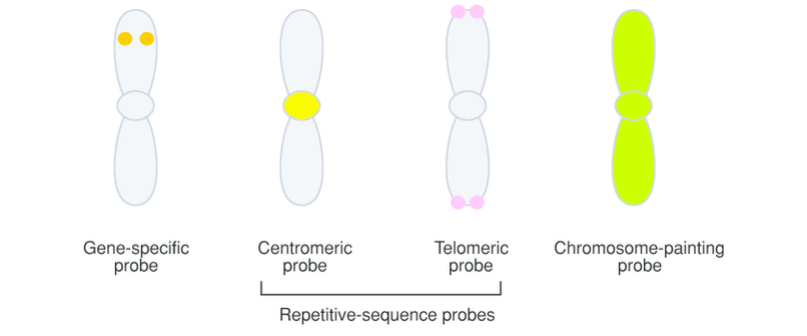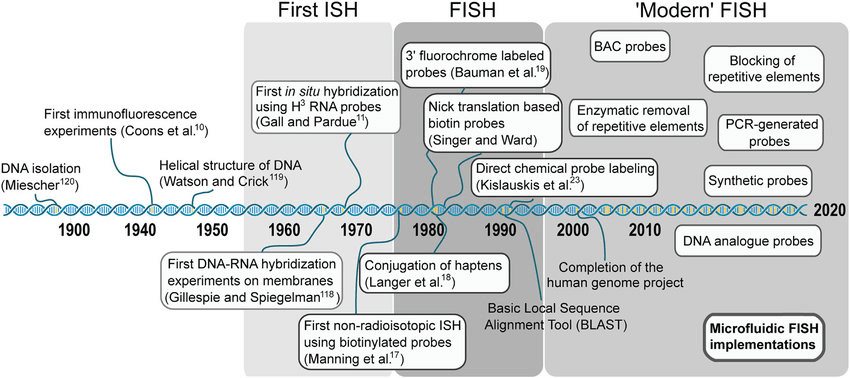CONTACT SUPPORT
Online Inquiry
Probes are the key to the accuracy and success of in situ hybridization analysis, especially fluorescence in situ hybridization (FISH). FISH technology started in the late 1980s, and has since undergone continuous development and produced many FISH variants. The generation of these variants is inseparable from the iteration of the probe. FISH probes have undergone negative changes in sequence length, target region, backbone, and fluorescent dye labeling methods. Taking the targeted region as an example, the early in situ hybridization probes mostly targeted polytene chromosomes or satellite sequences. This is because the signal detection of repetitive sequences does not rely on sensitive probes or detectors. The advent of fluorescent dye labeling has improved the visualization of probes. The earliest gene-specific FISH probes were produced in the gene bank after 1986, but the relative accuracy cannot be guaranteed. Later, the creation of unique and duplicate-free FISH probes from artificial chromosomes became the mainstream, which is the development of BCA-based FISH probes. With the development of gene cloning and new probe labeling strategies, the specific design of FISH probes has become possible, and the target specificity of the probes has been significantly improved.
 Fig 1. Examples of different types of fluorescent in situ hybridization probes. (Tönnies H, et al. 2002)
Fig 1. Examples of different types of fluorescent in situ hybridization probes. (Tönnies H, et al. 2002)
FISH is an important tool for in-situ visual analysis of DNA and RNA, and probes are an important part of it. Our probe customization service aims to provide customers with comprehensive FISH probe sequence design and synthesis services. We provide various types of FISH probe customization services, including classic BCA-derived FISH probes, oligonucleotide probes, ICON probes, PNA probes, LNA modified FISH probes, dual color break apart probe, gene fusion probe, and chromosome-specific probe can be customized according to the research needs of customers.
The types of probes are diversified, and the types are complete;
Highly qualified professionals with a bioinformatics background are responsible for the check of the design plan;
Industry-leading synthetic service provider;
Provide fluorescent dyes and labeling methods.
 Fig 2. Timeline of fluorescence in situ hybridization developments. (Huber D, et al. 2018)
Fig 2. Timeline of fluorescence in situ hybridization developments. (Huber D, et al. 2018)
Creative Bioarray provides customized services of sequence-specific probes for FISH solutions for cytogenetic analysis. Our feature is the ability to design and customize multiple types of FISH probes. Our FISH probe design and customization service includes 7 types of probe design solutions that can be used for FISH analysis, which can help customers in sequence design and probe optimization. At the same time, this service also includes internal quality control to ensure the quality of the delivered products. We provide various FISH probe designs for fluorescent dyes, and accept orders for fully commissioned and synthetic probes. You will benefit from our in-house optimized design method to provide you with a cost-effective FISH probe customized solution. If you have custom requirements for the above probes, please contact us for cooperation.
References